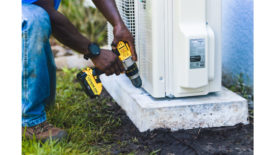Home » Keywords: » building codes
Items Tagged with 'building codes'
ARTICLES
In a podcast interview with SNIPS NEWS, David Burd of Owens Corning weighs in on the benefits of fiberglass in ducting
Read More
Why Sheet Metal Contractors go Above and Beyond Code with Duct Insulation
The acoustical and thermal qualities of different types and sizes of duct insulation can compensate for the unique challenges of a given space
Read More
International Code Council Highlights How Building Codes Contribute to Climate Goals at COP28
The International Code Council provides expertise for the building sector to help address climate change
Read More
MCA Announces Executive Committee and New Board Members
New Chair of the Executive Committee says 'I will maintain the high standard MCA has in all our efforts'
February 15, 2023
More States to Allow A2L in A/C Systems
Updating building codes allows for the use of this mildly flammable refrigerant
Read More
OEMs Press EPA on Rulemaking Details for AIM Act
Manufacturers cite need for date-of-manufacture provision and updated building codes
Read More
States Update Codes to Allow A2L Refrigerants
Equipment containing the new refrigerant is now available in four states, with more to come
Read More
International Code Council Stirs Up Its Mix of Codemakers
Architects, code officials object as ICC overhauls the process and range of participants for code updates
Read More
Dewberry’s Dan Koenigshofer and John Roberts Receive Award for ASHRAE’s Best Article of 2018
Article's findings have major implications for building codes throughout the U.S.
February 28, 2019
Copyright ©2024. All Rights Reserved BNP Media.
Design, CMS, Hosting & Web Development :: ePublishing











